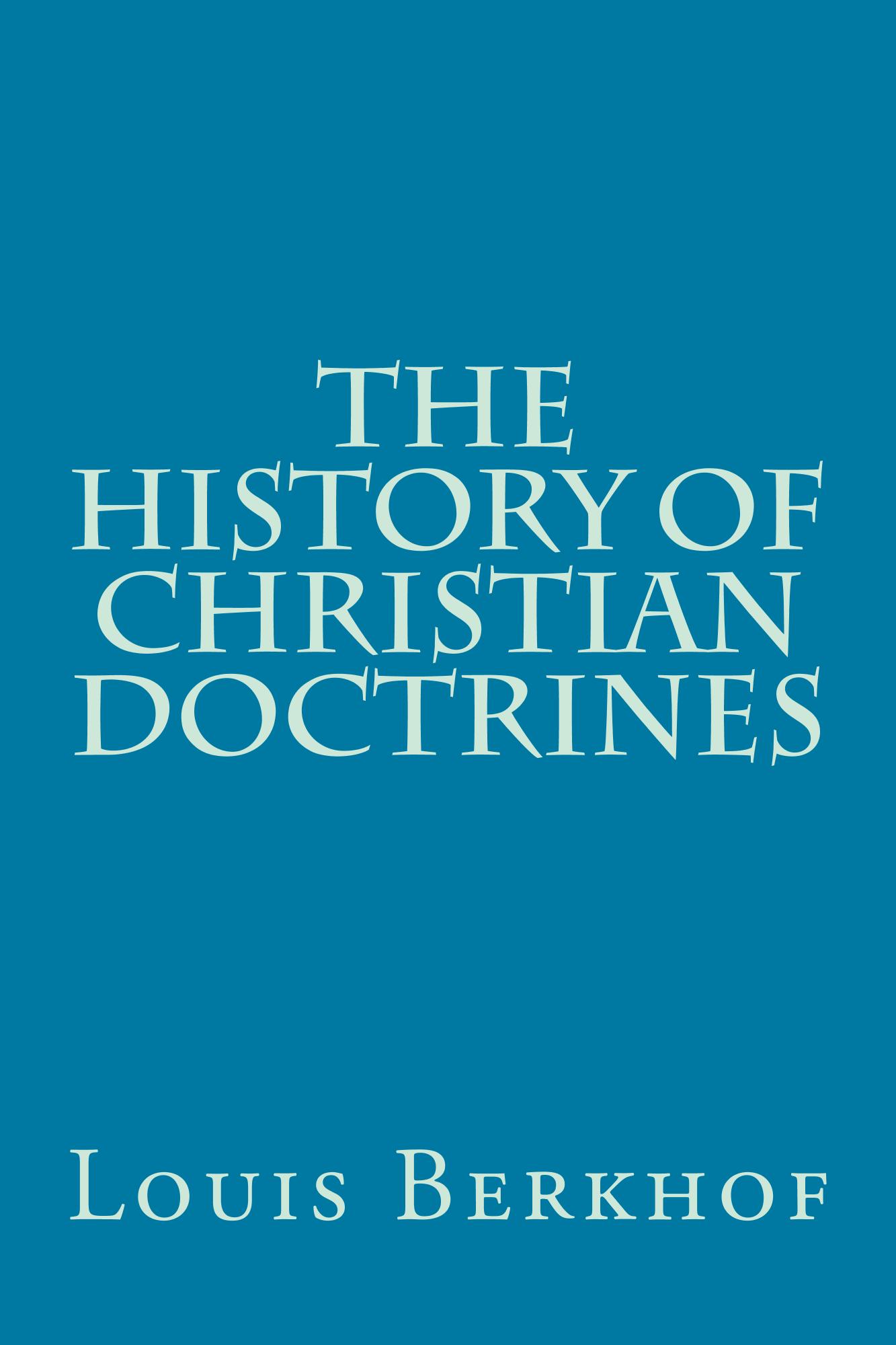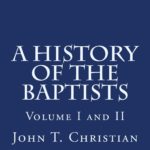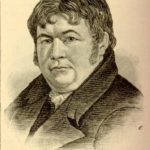Description
THE HISTORY OF CHRISTIAN DOCTRINES by Louis Berkhof
© Louis Berkhof 1937
Contents
PREFACE. 9
PROLEGOMENA. 10
I: THE SUBJECT-MATTER OF THE HISTORY OF DOGMA 10
I. THE MEANING OF THE WORD ‘DOGMA’ 10
2. THE ORIGIN AND CHARACTER OF DOGMAS. 11
II: THE TASK OF THE HISTORY OF DOGMA. 15
I. ITS PRESUPPOSITIONS. 15
2. ITS SUBJECT-MATTER. 18
III: METHOD AND DIVISIONS OF THE HISTORY OF DOGMA 21
I.DIVISIONS OF THE HISTORY OF DOGMA. 21
2. METHOD OF TREATMENT. 22
IV: HISTORY OF THE HISTORY OF DOGMA. 26
I.FACTORS THAT GAVE RISE TO THE HISTORY OF DOGMA AS A SEPARATE DISCIPLINE 26
2. EARLIER WORKS ON THE HISTORY OF DOGMA. 28
3. LATER WORKS ON THE HISTORY OF DOGMA. 30
PREPARATORY DOCTRINAL DEVELOPMENT. 33
I: THE APOSTOLIC FATHERS AND THEIR DOCTRINAL VIEWS 33
I. THEIR REPUTED WRITINGS. 33
2. FORMAL CHARACTERISTICS OF THEIR TEACHINGS 34
3. MATERIAL CONTENTS OF THEIR TEACHINGS. 36
II: PERVERSIONS OF THE GOSPEL. 40
I. JEWISH PERVERSIONS. 40
2. GENTILE PERVERSIONS: GENTILE—CHRISTIAN GNOSIS 42
III. REFORM MOVEMENTS IN THE CHURCH.. 50
I. MARCION AND HIS MOVEMENT OF REFORM.. 50
2. THE MONTANIST REFORMATION. 52
IV: THE APOLOGISTS AND THE BEGINNINGS OF THE CHURCH’S THEOLOGY 55
I. THE TASK OF THE APOLOGISTS. 55
2. THEIR POSITIVE CONSTRUCTION OF THE TRUTH.. 56
3. THEIR SIGNIFICANCE FOR THE HISTORY OF DOGMA 59
V: THE ANTI-GNOSTIC FATHERS. 62
I. THE ANTI-GNOSTIC FATHERS. 62
2. THEIR DOCTRINES OF GOD, MAN, AND THE HISTORY OF REDEMPTION 63
3. THEIR DOCTRINE OF THE PERSON AND WORK OF CHRIST 65
4. THEIR DOCTRINES OF SALVATION, OF THE CHURCH, AND OF THE LAST THINGS 68
VI: THE ALEXANDRIAN FATHERS. 71
I. THE ALEXANDRIAN FATHERS. 71
2. THEIR DOCTRINES OF GOD AND OF MAN. 72
3. THEIR DOCTRINE OF THE PERSON AND WORK OF CHRIST 74
4. THEIR DOCTRINES OF SALVATION, OF THE CHURCH, AND OF THE LAST THINGS 76
VII: MONARCHIANISM.. 79
I. DYNAMIC MONARCHIANISM.. 79
2.MODALISTIC MONARCHIANISM.. 80
THE DOCTRINE OF THE TRINITY. 83
I: THE TRINITARIAN CONTROVERSY. 83
I. THE BACKGROUND.. 83
2. THE NATURE OF THE CONTROVERSY. 84
3. THE COUNCIL OF NICAEA. 86
4. THE AFTERMATH.. 87
II: THE DOCTRINE OF THE TRINITY IN LATER THEOLOGY 95
I. THE DOCTRINE OF THE TRINITY IN LATIN THEOLOGY 95
2. THE DOCTRINE OF THE TRINITY IN THE PERIOD OF THE REFORMATION 96
3. THE DOCTRINE OF THE TRINITY AFTER THE PERIOD OF REFORMATION 98
THE DOCTRINE OF CHRIST. 100
I: THE CHRISTOLOGICAL CONTROVERSIES. 100
I. FIRST STAGE OF THE CONTROVERSY. 101
2. SECOND STAGE OF THE CONTROVERSY. 108
II: LATER CHRISTOLOGICAL DISCUSSIONS. 115
I. IN THE MIDDLE AGES. 115
2. DURING THE REFORMATION. 116
3. IN THE NINETEENTH CENTURY. 118
THE DOCTRINE OF SIN AND GRACE AND RELATED DOCTRINES 127
I: THE ANTHROPOLOGY OF THE PATRISTIC PERIOD.. 127
1. THE IMPORTANCE OF ANTHROPOLOGICAL PROBLEMS 127
2. THE ANTHROPOLOGY OF THE GREEK FATHERS. 128
3. THE GRADUAL EMERGENCE OF ANOTHER VIEW IN THE WEST 129
II: THE PELAGIAN AND AUGUSTINIAN DOCTRINES OF SIN AND GRACE 132
I. AUGUSTINE AND PELAGIUS. 132
2. THE PELAGIAN VIEW OF SIN AND GRACE. 133
3. THE AUGUSTINIAN VIEW OF SIN AND GRACE. 135
4. PELAGIAN AND SEMI-PELAGIAN CONTROVERSIES 138
III: THE ANTHROPOLOGY OF THE MIDDLE AGES. 142
I. THE VIEWS OF GREGORY THE GREAT. 142
2. THE GOTTSCHALKIAN CONTROVERSY. 143
3. THE CONTRIBUTION OF ANSELM.. 144
4. PECULIARITIES OF ROMAN CATHOLIC ANTHROPOLOGY 147
IV: THE ANTHROPOLOGY OF THE PERIOD OF THE REFORMATION 150
I. THE ANTHROPOLOGY OF THE REFORMERS. 150
2. THE SOCINIAN POSITION. 152
3. ARMINIAN ANTHROPOLOGY. 153
4. THE POSITION OF THE SYNOD OF DORT. 155
5. THE POSITION OF THE SCHOOL OF SAUMUR. 157
V: ANTHROPOLOGICAL VIEWS OF POST-REFORMATION TIMES 159
I. DIVERGENT VIEWS. 159
2. SOME MODERN THEORIES OF SIN. 162
THE DOCTRINE OF ATONEMENT OR THE WORK OF CHRIST 167
I: THE DOCTRINE OF THE ATONEMENT BEFORE ANSELM 167
I. IN GREEK PATRISTIC THEOLOGY. 167
2. IN LATIN PATRISTIC THEOLOGY. 170
II: THE DOCTRINE OF THE ATONEMENT FROM ANSELM TO THE REFORMATION 174
I. THE DOCTRINE OF THE ATONEMENT IN ANSELM.. 174
2. ABELARD’S THEORY OF THE ATONEMENT. 177
3. REACTION TO ABELARD IN BERNARD OF CLAIRVAUX 179
4. SYNCRETISTIC VIEWS OF THE ATONEMENT. 179
5. DUNS SCOTUS ON THE ATONEMENT. 183
III: THE DOCTRINE OF THE ATONEMENT IN THE PERIOD OF THE REFORMATION 186
I. THE REFORMERS IMPROVE ON THE DOCTRINE OF ANSELM 186
2. THE SOCINIAN CONCEPTION OF THE ATONEMENT 188
3. THE GROTIAN THEORY OF THE ATONEMENT. 190
4. THE ARMINIAN VIEW OF THE ATONEMENT. 192
5. THE COMPROMISE OF THE SCHOOL OF SAUMUR. 194
IV: THE DOCTRINE OF THE ATONEMENT AFTER THE REFORMATION 197
I. THE MARROW CONTROVERSY IN SCOTLAND.. 197
2. SCHLEIERMACHER AND RITSCHL ON THE ATONEMENT 198
3. SOME OF THE MORE RECENT THEORIES OF THE ATONEMENT 200
THE DOCTRINE OF THE APPLICATION & APPROPRAIATION OF DIVINE GREACE 206
I: THE SOTERIOLOGY OF THE PATRISTIC PERIOD.. 206
I. THE SOTERIOLOGY OF THE FIRST THREE CENTURIES 206
2. THE SOTERIOLOGY OF THE REMAINING CENTURIES OF THE PATRISTIC-PERIOD 209
II: THE SOTERIOLOGY OF THE SHOLASTIC PERIOD.. 216
I. THE SCHOLASTIC CONCEPTION OF GRACE. 216
2. THE SCHOLASTIC CONCEPTION OF FAITH.. 217
3. THE SCHOLASTIC CONCEPTION OF JUSTIFICATION AND MERIT 218
III: REFORMATION AND POST-REFORMATION SOTERIOLOGY 223
I. THE LUTHERAN ORDER OF SALVATION. 223
2. THE REFORMED ORDER OF SALVATION. 225
3. THE ARMINIAN ORDER OF SALVATION. 227
4. MINOR CONCEPTIONS OF THE ORDER OF SALVATION 229
THE DOCTRINE OF THE CHURCH AND THE SACRAMENTS 232
I: THE DOCTRINE OF THE CHURCH.. 232
I. IN THE PATRISTIC PERIOD.. 232
2. IN THE MIDDLE AGES. 237
3. DURING AND AFTER THE REFORMATION. 242
II: THE DOCTRINE OF THE SACRAMENTS. 249
I. THE SACRAMENTS IN GENERAL. 249
2. BAPTISM.. 255
3. THE LORD’S SUPPER. 260
THE DOCTRINE OG THE LAST THINGS. 267
I: THE INTERMEDIATE STATE. 267
II: THE SECOND ADVENT AND THE MILLENNIAL HOPE. 270
III: THE RESURRECTION. 274
IV: THE LAST JUDGMENT AND THE FINAL AWARDS. 276
LITERATURE. 280
The History of Christian Doctrines by Louis Berkhof
PREFACE
The Historical Volume of what was originally called Reformed Dogmatics now appears with a new title, namely, History of Christian Doctrines. Works on the gradual development of theological truth in the Church of Jesus Christ usually appear alongside of those which deal with the systematic reproduction of it, and thus stand out as separate works. It was thought best to follow this practice, since this will stress the fact that, after all, the history of the development of Christian thought in the Church is a separate study.
But while it is a separate study, it is not one which students of theology can afford to neglect. The study of doctrinal truth, apart from its historical background, leads to a truncated theology. There has been too much of this in the past, and there is a great deal of it even in the present day. The result has been the lack of a sound understanding and a proper evaluation of the truth. There was no appreciation of the fact that the Holy Spirit guided the Church in the interpretation and development of the truth as it is revealed in the Word of God. The checks and the roadsigns of the past were not taken into consideration, and ancient heresies, long since condemned by the Church, are constantly repeated and represented as new discoveries. The lessons of the past are greatly neglected, and many seem to feel that they should strike out entirely on their own, as if very little had been accomplished in the past. Surely, a theologian must take account of the present situation in the religious world, and ever study the truth anew, but he cannot neglect the lessons of the past with impunity. May this brief study of the history of doctrines serve to create a greater interest in such historical study, and lead to a better understanding of the truth.
L. BERKHOF
Grand Rapids, Michigan I August 1949
The History of Christian Doctrines by Louis Berkhof
PROLEGOMENA
I: THE SUBJECT-MATTER OF THE HISTORY OF DOGMA
The History of Dogma is not concerned with theology in general. It deals primarily with dogmas in the strict sense of the word, and only secondarily with the doctrines that have not yet received ecclesiastical sanction.
The History of Christian Doctrines by Louis Berkhof
I. THE MEANING OF THE WORD ‘DOGMA’
Derivation of ‘dogma’
The word ‘dogma’ is derived from the Greek dokein, which in the expression dokein moi meant not only ‘it seems to me’, or ‘it pleases me’, but also ‘I have definitely determined something so that it is for me an established fact’. The last word ‘dogma’ became the designation of a firm, and especially a public, resolution or decree. It was applied to the self-evident truths of science, to well-established and admittedly valid philosophical convictions, to government decrees, and to officially formulated religious tenets.
‘Dogma’ in Scripture
The Bible uses the word as a designation of government decrees in the Septuagint, Esth 3:9; Dan 2:13; 6:8; Luke 2:1; Acts 17:7; of the ordinances of the Old Testament, Eph 2:15; Col 2:14, and of the decisions of the Assembly of Jerusalem, Acts 16:4. While it was the philosophical and not the biblical usage of the term that gave rise to its later meaning in theology, yet its use in Acts 16:4 has points of resemblance with its later usage in theology. The Jerusalem Assembly, it is true, did not formulate a doctrine but a regulation for the ethical life of the Church; yet its decision was occasioned by a doctrinal controversy, had doctrinal bearings, and was not merely a piece of advice but a positive injunction with ecclesiastical sanction.
‘Dogma’ in theology
While the word ‘dogma’ is sometimes used in religion and theology with a great deal of latitude, as practically synonymous with ‘doctrine,’ it generally has a more restricted meaning. A doctrine is the direct, often naive, expression of a truth. It is not necessarily formulated with scientific precision, and when it is, may be merely the formulation of a single person. A religious dogma, on the other hand, is a religious truth based on authority and officially formulated by some ecclesiastical assembly. This meaning of the word is not determined by its scriptural usage, in which it always denotes a decree, a commandment, or a rule of practical life, but is more in harmony with the philosophical use of the word to denote a proposition or principle. Some of the early Church Fathers used it to describe the substance of doctrine. Cf Hagenbach, History of Doctrines Hauck, Realencyclopaedie, Art Dogmatik.
The History of Christian Doctrines by Louis Berkhof
2. THE ORIGIN AND CHARACTER OF DOGMAS
Catholic conception of dogma
Religious doctrines are found in Scripture, though not in finished form, but dogmas in the current sense of the word are not found there. They are the fruit of human reflection, the reflection of the Church, often occasioned or intensified by theological controversies. Roman Catholics and Protestants differ somewhat in their description of the origin of dogmas. The former minimize, if they do not exclude, the reflection of the Church as the body of believers, and substitute for it the study of the teaching Church or the hierarchy. Whenever a new form of error arises, the teaching Church, that is the clerus, which now has its infallible spokesman in the Pope, after careful examination, formulates the doctrine taught in Scripture or by tradition, declares it to be a revealed truth, and imposes its acceptance on all the faithful. Says Wilmers in his Handbook of the Christian Religion, p 151: ‘A dogma, therefore, is a truth revealed by God, and at the same time proposed by the Church for our belief.’ Similarly Spirago-Clarke in The Catechism Explained: ‘A truth which the Church puts before us as revealed by God is called a truth of faith, or a dogma.’ p 84. And since the Church is infallible in matters of doctrine, a truth so proposed is not only authoritative but also irrevocable and unchangeable. ‘If any one shall assert it to be possible that sometimes, according to the progress of science, a sense is to be given to doctrines propounded by the Church different from that which the Church has understood and understands: let him be anathema.’ Dogmatic Decrees of the First Vatican Council, Canons IV 3.
The History of Christian Doctrines by Louis Berkhof
Protestant conception of dogma
The Reformers substituted for this Roman Catholic view another which, in spite of its similarity, yet differs from it in important points. According to them all truly religious dogmas derive their material contents from Scripture only. They do not recognize the unwritten word or tradition as a source of dogmas. At the same time they do not regard dogmas as statements taken directly from the Bible, but represent them as the fruit of the reflection of the Church, as the body of believers, on the truths of revelation, and as the official formulations of competent representative bodies. Since the reflection of the Church is often determined and deepened by doctrinal controversies, the formulations to which Church Councils or Synods are finally led under the guidance of the Holy Spirit often bear the earmarks of past struggles. They are not infallible but yet have a high degree of stability. And they are authoritative, not merely because they are proposed by the Church, but formally as defined by the Church and materially as based on the Word of God.
The History of Christian Doctrines by Louis Berkhof
Modern conception of dogma
Under the influence of Schleiermacher, Ritschl, Vinet, and others, a radically different conception of the origin of dogmas was developed, which found ready acceptance in many Protestant circles. It represents the Christian consciousness, Christian experience, the Christian faith, or the Christian life as the source of the material contents of dogmas, and regards this as more in harmony with the principles of the Reformation. The dogmas of the Church are simply the intellectual formulations of its experiences, sentiments, and beliefs, which, according to some, are awakened by an objective factor, in which piety recognizes a divine revelation. Schleiermacher contends for the immediacy of these religious experiences, while Ritschl and his School maintain that they are mediated by some objective factor, which faith honours as a revelation of God. The religious community reflects on these experiences and finally by some competent body gives them formal intellectual expression and thus transforms them into dogmas. On this view, as well as on the other, the formulation of dogmas is not the work of an individual theologian, but of a community, either the Church (Schleiermacher), or the State going hand in hand with the Church (Lobstein). This view of the origin of dogmas is held by Schleiermacher, Ritschl, Kaftan, Lobstein, Vinet, Sabatier, Is. Van Dijk, and others. It should be noted, however, that it does not describe the way in which the existing dogmas actually originated in the Protestant Churches, but only the way in which, according to these writers, dogmas should come into existence. They regard the old dogmas as antiquated, because they are too intellectual and do not give adequate expression to the life of the Church, and call for a new dogma vibrant with the life of the religious community.
The History of Christian Doctrines by Louis Berkhof
Hamack’s view of dogma
Hamack’s view deserves special mention here. In his monumental work on The History of Dogma he seeks to discredit the whole dogma (i.e. the whole complex of dogmas) of the early Church by representing it as an unnatural mixture of Greek Philosophy and Christian truth, in which the foreign philosophical ingredient is the preponderating element. Says he: ‘Dogma in its conception and development is a work of the Greek spirit on the soil of the Gospel.’ The Church yielded to the temptation to represent its message in a form that would make it appear as wisdom rather than foolishness and thus to gain for it the proper respect of the educated people. The practical faith of the Church was transformed into an intellectual concept, a dogma, and this became the real pivot of the history of the Church. This was a great mistake, and a mistake that was continued in the later formation of dogmas, so that the whole history of dogma is really the history of a colossal error. It is the great ambition of the Ritschlian School, to which Harnack belongs, to eliminate all metaphysics from theology.
The History of Christian Doctrines by Louis Berkhof
Definition of dogma
A dogma may be defined as a doctrine, derived from Scripture, officially defined by the Church, and declared to rest upon divine authority. This definition partly names and partly suggests its characteristics. Its subject-matter is derived from the Word of God and is therefore authoritative. It is not a mere repetition of what is found in Scripture, but the fruit of dogmatic reflection. And it is officially defined by a competent ecclesiastical body and declared to rest upon divine authority. It has social significance, because it is the expression, not of a single individual, but of a community. And it has traditional value, since it passes the precious possessions of the Church on to future generations. In the History of Dogma we see the Church becoming ever increasingly conscious of the riches of divine truth under the guidance of the Holy Spirit, mindful of her high prerogative as the pillar and ground of the truth, and engaged in the defence of the faith once delivered to the saints.
The History of Christian Doctrines by Louis Berkhof





Reviews
There are no reviews yet.